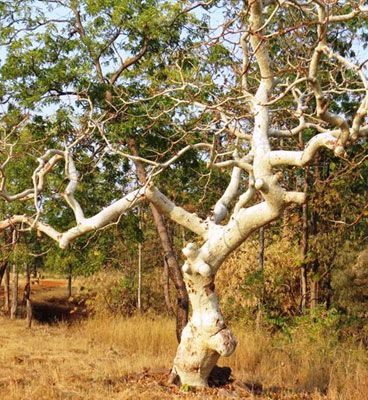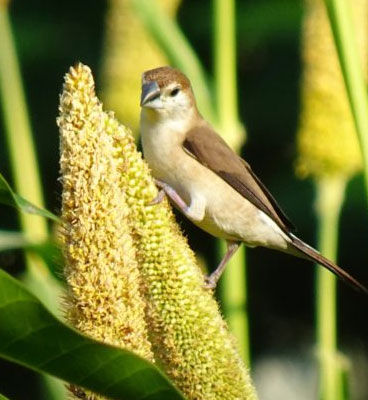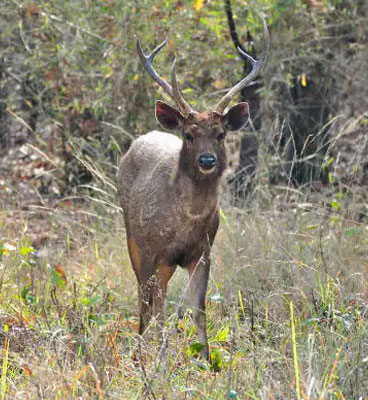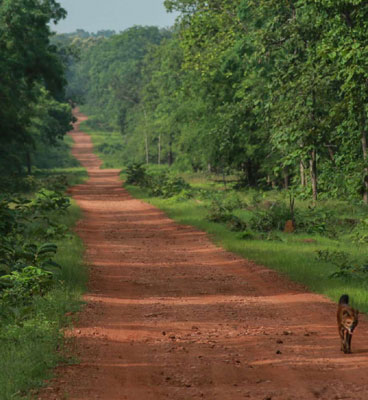
The main purpose of the formation of Tadoba national park was to conserve the biodiversity present in the region. Theregion's tropical climate results in mainly Southern tropical dry deciduous forest type of flora in Tadoba National Park. While 87% of this is a protected area, the national park's core area is composed of dense woodlands. Around 141 species of plants and trees belonging to 58 botanical families are found in the forest reserve. These consist of a variety of trees, shrubs, herbs, weeds, as well as grasses. The flora of Tadoba can be divided into the following categories :


Located in the Chandrapur district of Maharashtra, Tadoba national park is one of the state's oldest, best, and largest national parks. Formed in 1955, the Tadoba national park is 588 sq. km. in area. The Andhari wildlife sanctuary formed in 1986 was joined to the Tadoba national park in 1995, making the reserve's total area 1,727 sq. km.
| Ain (Crocodile Bark) | Bija |
| Dhaudab | Hald |
| Salai | Semal |
| Shisham | Sisoo |
| Shivan | Surya |
| Sirus | Tendu |
| Beheda | Bel |
| Chichwa | Dhawada |
| Kusum | Hirda |
| Karaya Gum | Mahua |
| Woodier Tree | Jamun |
Teak is the most common tree found in the National Park. Apart from teak, bamboos are the other predominant tree species in Tadoba. Different areas of the forest boast of different varieties of trees. While denser areas of forest are replete with axle wood (Anogeissus latifolia), a fire-resistant plant species, and the flame of forest or Palas, adds vibrant hues to the forest with its brightly colored flowers. The area near the lake and watering hole at Panchdhara has several mangoes, Arjun, and black plumtrees. The grassland region has many medicinal plants, including velvet bean creepers, also known as KachKujali(helpful in the treatment of Parkinson’s disease), Bija (medicinal gum is obtained from it), Ceylon satinwood (used for the treatment of rheumatism, ophthalmic infection, cataract), Bheria (its leaves are used as insect repellent), Neem,Beheda,and Heria.Other wild deciduous trees found in the protected areas of the park include Semal, Crepe myrtle (Mahua Machuca), crocodile bark (Ain), Dhauda, Hirda, Hald, Tendu, Salai, Bor Bel, Surya, Karaya Gum, Kusum Mahua, Shisham, Lanneacormandelica (wodier tree), Chichwa, Mowai, Rohan, Dhawada, Phetra, Sisoo, Sirus, Shivan, Jamun, Bel, Char, Ber,Harra, tamarind (Tamarindus indica), etc.
Apart from medicinal plants and creepers, the trees found in the region have their importance too. Ain tree’s bark is fire resistant and used to make musical instruments (acoustic guitars), furniture, boats, railroad cross ties, etc. The Semal tree, also known as the Malabar silk cotton tree, yields large amounts of cotton used in the Malabar region for various purposes. Shisham is also known as the North Indian rosewood tree and is extremely popular for making furniture. Its fruits can be used to make organic pesticides. The seeds of the Kusum tree are used for their oil which finds application in several industries, including personal care.
The dry deciduous forest area of Tadoba is home to 28 varieties of shrubs, including 17 climber species. The majority of the shrub species are evergreen, while some of them are deciduous in nature. Most commonly found shrubs in the region includeGrewia rothii, G. hirsuta, Aristolochia indica,Helicteresisora, andCryptolepisbuchananii. Since different parts of the forest receive varying degrees of sunlight and moisture, the species richness and density might differ in different parts.


A total of 159 species of herbaceous plants have been observed in different parts of Tadoba national park. The largest number of herb species are found in the monsoon season as the temperature and rainfall are conducive for their growth. The most common herb species found here include Urginea indica,Grangeamadaraspatana,Murdannia edulis,Lathyrus sativus, Coldeniaprocumbens,Scilahyacynthiana, Chlorophytum laxum, C.tuberosum, Melilotus alba, Orthosiphon rubicundus,Curculigoorchioides, andCurcuma angustifolia.
Parthenium hysterophorus, Lantana camara, and Hyptissuaveolens are some of the common invasive weed species found in theTadoba tiger reserve.
A safari through these dense woodland forests offers the perfect opportunity to soak in the wonderful sights the Tadoba national park has to offer.
Bhushan Mehare
adoba is place to be visited again and again. Its natural bounty and plethora of flora and fauna attracts you and enough to rejuvenate your mind and body whenever you visit it.
Parag Vishwakarma
We visited Tadoba in 2020 this was the month of April. Though, climate was bit harsh but we enjoyed jeep safari ride. Our safari ride was success as we spotted two tigers.
Shrinivas Acharya
Natural wonder! No doubt at all!! Those who have interest in wildlife must visit explore the vastness of Tadoba Andhari National Park. What a great place in India it is.